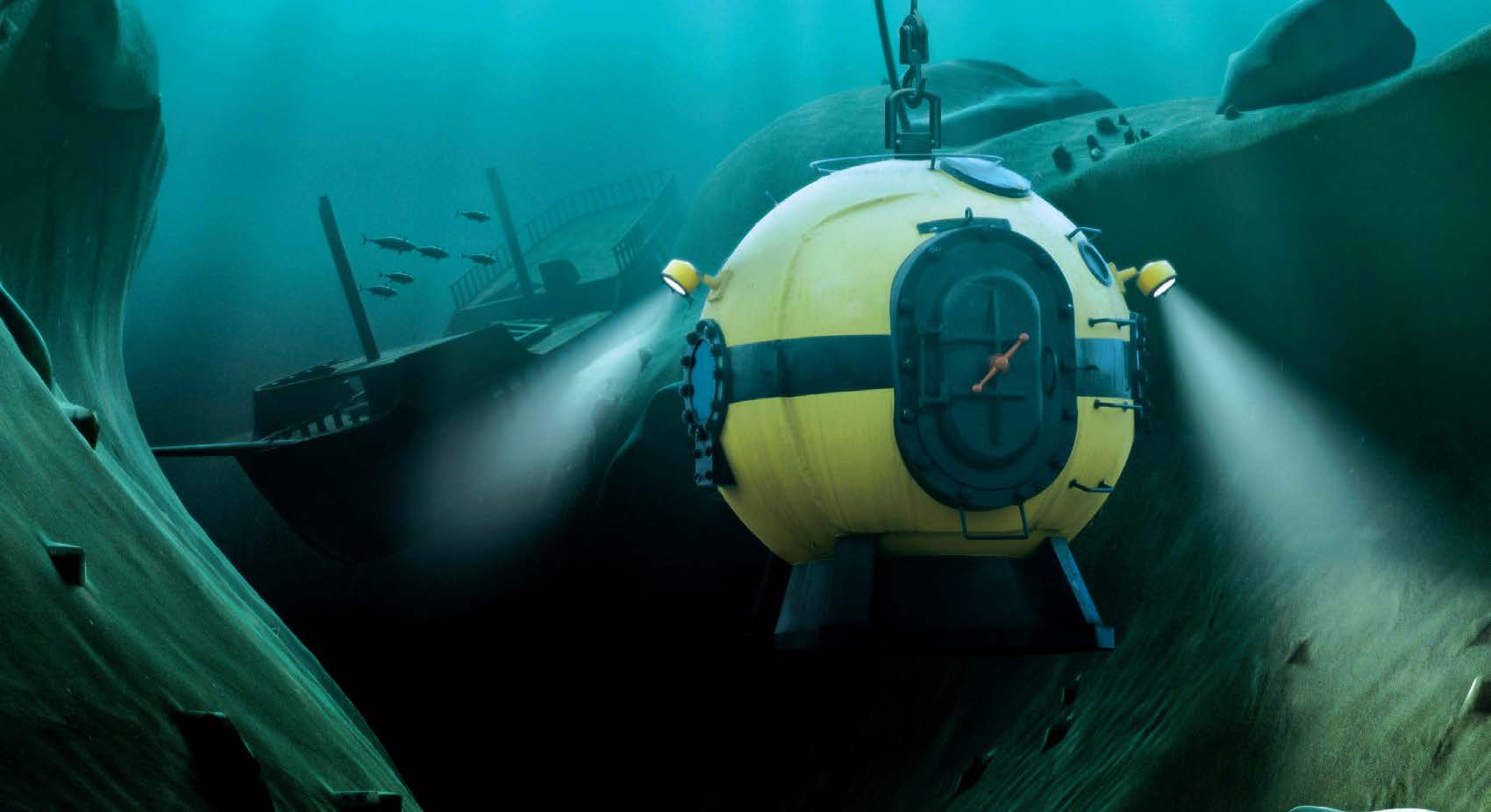Under Pressure
Evan Zabawski | TLT From the Editor July 2013
A quick, correct answer may not come quickly.

I have never heard of Jacques-Yves Cousteau, Robert Ballard or James Cameron describing the water as being overly viscous at the bottom of the sea.
www.canstockphoto.com
DURING THIS YEAR’S STLE ANNUAL MEETING & EXHIBITION, the society hosted 30 students from Detroit’s Cass Technical High School at the first annual STEM (science, technology, engineering and mathematics) Camp. The students participated in 10 hands-on experiments focusing on important areas of tribological study such as grease manufacturing, sliding friction, flash rusting and boundary lubrication.
One particular experiment on viscosity measurement prompted a question from a student that stumped the instructor and a resident expert. While being shown a method to measure viscosity in the field, the students learned that viscosity decreases with a rise in temperature and increases with a rise in pressure. After being shown the viscosity of various fluids at room temperature in contrast to water, a student asked if the viscosity of water would also increase under pressure. This seemingly simple question did not prompt an immediate answer. Never in the instructor’s 40 years of experience had he come across that concept, so he turned to an equally experienced expert and failed to get an answer from him.
After the camp finished, I ran into the instructor, whereupon he told me this story and expressed his embarrassment. I confessed I wasn’t sure either, so we tried to deduce it by discussing various properties of water.
First, water is a Newtonian fluid, meaning that its viscosity will not change with application of an external force. Whether it is being mixed or sitting still, all other factors being equal, the viscosity of water is the same. It is possible for the viscosity of Newtonian fluids to change under pressure but not necessarily always true.
Second, water is incompressible, meaning that its volume will not decrease substantially with an application of an external force. Whether it is at sea level or at the bottom of the ocean, all other factors being equal, the density of water is generally the same. Hydraulic fluids are also considered incompressible, and we know their viscosity increases under pressure.
Lastly, water displays an anomalous relationship between temperature and density, meaning that it does not always display positive pressure dependence. At 3.98 C (39.16 F) water is at its peak density. Any warmer and its density will decrease, but interestingly enough it will decrease as it approaches freezing as well.
The temperature of the water in the depths of the ocean is in this anomalous region between freezing and maximum density, but I have never heard of Jacques-Yves Cousteau, Robert Ballard or James Cameron describing the water as being overly viscous at the bottom of the sea. Perhaps temperature plays a role in pressure’s dependence on viscosity?
Luckily for us, Jürn W.P. Schmelzer, Edgar D. Zanotto and Vladimir M. Fokin pursued a very similar question in their 2005 paper, “Pressure Dependence on Viscosity” published in
The Journal of Chemical Physics. Their research showed that dependence of the viscosity on pressure changes qualitatively, and a minimum occurs around 25 C (77 C). In other words, at less than 25 C the viscosity of water actually decreases under pressure, proportionally to temperature (less change as it gets colder), regardless of pressure. At the stated minimum, the viscosity of water will decrease until pressures near 50 MPa (~7000 psi); at that point the water will begin to behave “normally,” meaning its viscosity will increase with further increases in pressure.
So if you started reading this article thinking you weren’t sure how water behaved either, take comfort that the answer was a contextual “it depends.” It depends on the temperature of the water, and, ironically, the pressure.
 Evan Zabawski, CLS, is a reliability specialist in Calgary, Alberta, Canada. You can reach him at evan.zabawski@gmail.com
Evan Zabawski, CLS, is a reliability specialist in Calgary, Alberta, Canada. You can reach him at evan.zabawski@gmail.com.